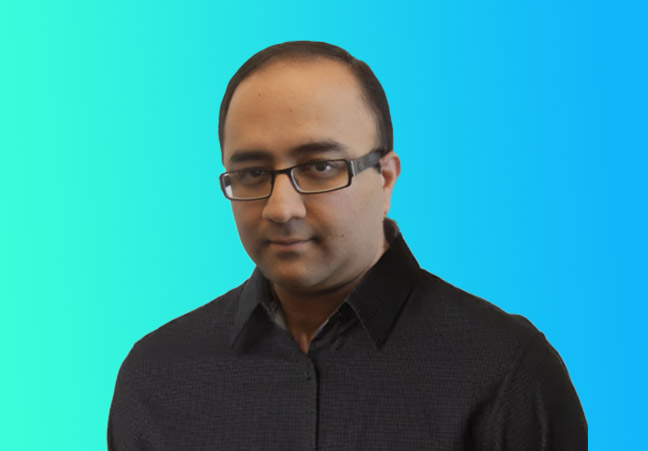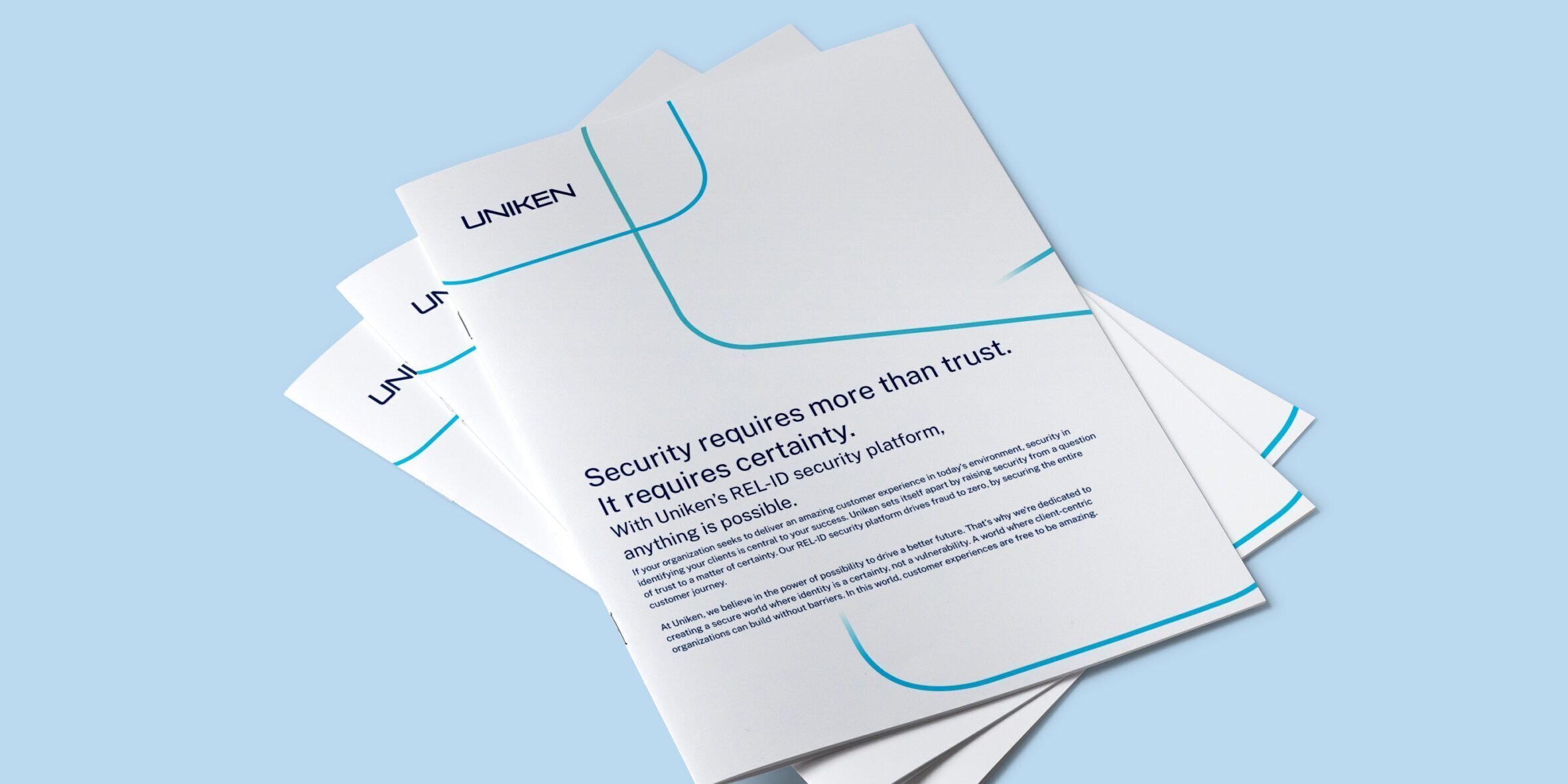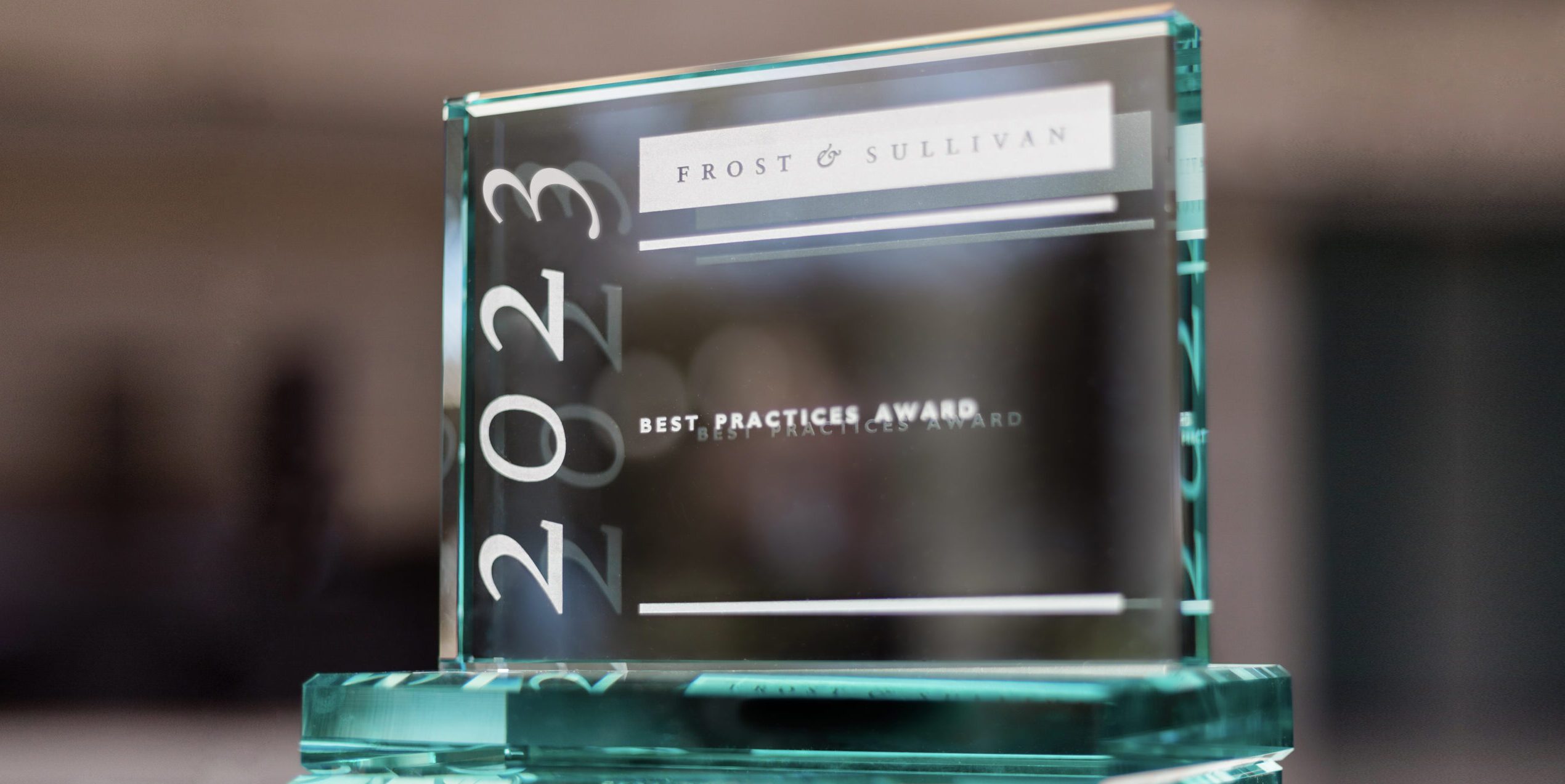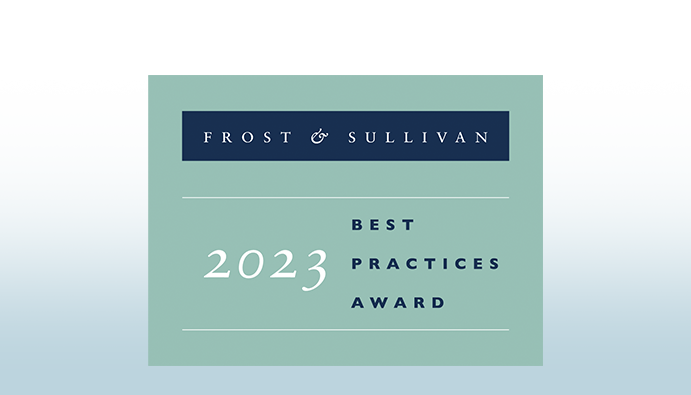Uniken’s Chief Technology Officer, Nishant Kaushik, interviews with InformationSecurity.report
Nishant discusses risk management, security vulnerabilities, transaction processing systems, and the latest security protocols in the cybersecurity industry in an exclusive interview with InformationSecurity.report.
Chatham, NJ — July 16, 2023 — In a recent interview with InformationSecurity.report, the Chief Technology Officer of Uniken, Nishant Kaushik, shared valuable insights on the challenges faced by the organization in ensuring the security of their omnichannel transaction processing systems, as well as their approach to risk management and security protocols. With a focus on delivering consistent security solutions and optimizing the balance between security and convenience, Uniken has positioned itself at the forefront of the cybersecurity industry.
Here is the full, exclusive interview:
Media 7: Please tell us something about your organization. What are some of the biggest challenges Uniken faces in ensuring that your omnichannel transaction processing systems are secure and how do you address those challenges?
Nishant Kaushik: As we provide a security platform for customer facing businesses that operate on a variety of channels, just dealing with the continued evolution of each of these channels and their associated technology stacks is our biggest challenge. We need to make sure that the security solutions we provide to our customer and clients are consistent, regardless of which geography, what technical stack, or what technical capability the end users have. Delivering that is our key focus, and in order to address these challenges and maintain consistency, we really focus on understanding the technical stack evolutions, staying up-to-date on the latest standards and threat vectors, and emerging best practices.
The consistency really comes from our simplicity of approach. We have a very strong security and privacy-by-design philosophy to our product development and our product capabilities. And, we don’t really try to deviate from that too much regardless of the channel or the tech stack. It gives us a very strong north star in terms of how to tackle the constantly changing landscape, avoid confusion, or create gaps in the product offering. That really is the key to us maintaining that consistency of security and experience.
M7: How does your organization balance the need for security with the need for convenience and ease of use in your transaction processing systems?
NK: From a design philosophy perspective, we try not to think of it as balance but as optimization. Often in security, we hear of people trying to strike a balance because they’re told they have to choose between security and convenience – you can either have one or the other, but you can’t have both. From the beginning, our approach has been to deliver the best of both worlds by focusing on the end customer experience, so really thinking about the end-user and how they approach it. By putting ourselves in the end-user’s shoes and making sure that whatever we do from a security perspective is done in a fashion that doesn’t put the burden on them, but instead makes it simple for them to use whichever product or channel they’re engaging in. That enables us to find the optimal approach to delivering the right level of security without compromising the user experience that the end user is striving for. Our user-centric design or human-centric design approach to security enables us to balance concerns and achieve that optimization of security and convenience.
M7: Can you discuss your unique approach to risk management and how you prioritize security measures across different channels and systems?
NK: From a risk management perspective, the approach is really driven by us doing threat vector analysis. We have a few different frameworks we follow that allow us to identify tabletop scenarios and security analyses of threat vectors that customers would face. We use them to feed requirements into product design decisions concerning our defense in-depth approach for security, where we have combined omnichannel multifactor authentication, channel security, device security, etc. into our overall product solution set. The main differentiator for how we have approached the product is rather than being locked into one particular segment of security, either pure authentication or pure network security, we took a holistic approach where we decided we had to bring all of these pieces together, all of these different aspects of security together into one combined solution where they have to work together to deliver a cohesive and consistent approach.
Our approach to risk management was driven by this philosophy of looking at the security threat environment from multiple angles, not just from a user-risk perspective, but also from a device-risk and a network-risk perspective. And that approach helps us prioritize – essentially from a product management perspective – what features and capabilities to deliver our customers, irrespective of the channel. This directly led to our product approach in delivering omnichannel security. We try to ensure that no channel becomes the weakest link because attackers will always gravitate towards it. They will analyze your environment and find that weakest link, that channel which has the lowest security, and they will direct their attacks at that channel.
If you focused on strengthening your authentication in the mobile stack, they might go to the web. If you spend time shoring up the security for mobile and web, then they might attack the contact center or the call center. To protect our customers, we wanted to ensure that every channel was equally secure. That helped us prioritize our measures towards a mobile-first approach and deliver our solutions in a mobile-first manner.
M7: In all aspects of your career, have you been involved in any projects or situations that particularly stood out to you as memorable?
NK: When you’ve been doing this for as long as I have and you’re in a space as exciting and varied as identity and security, you tend to go through many different things. So, there’s no one thing that stands out. There have been several engagements with clients, especially at early stages of the company, where you’re doing proof of concepts or prototypes, and you encounter some interesting situations that kind of come out of left field and throw you for a loop, requiring you to react on the spot.
Some of them are challenging, some of them are comical almost, like that time during a proof of concept where in the middle of the final demo, somebody literally pulled out the power plug on the computers and our demo died in the middle. I’ve been in an early stage startup where we had to recover or essentially help the company rebuild itself out of the ashes of 9/11… so in a long career, I continue to find memorable things every year as we continue to play in a space that’s interesting, whether we’re dealing with new and emerging tech or companies that are trying to bring unique solutions to market. For example, we’re working with some of our partners on creating solutions for financial inclusion and technology that caters to the unbanked or people in remote areas – all of which continues to throw exciting challenges at us.
M7: How does your organization monitor developments in the latest trends of omnichannel security and what steps do you take to ensure that your systems are always at the forefront of security best practices?
NK: That’s a somewhat complex question because it is a multi-dimensional approach. The number one thing that we do is listen to our customers. Often our customers or our clients are the ones dealing with the latest trends because they’re seeing it in their customer environment, they’re finding out which devices are being used and what capabilities their end customers are demanding. So client feedback is a big part of what helps us to understand the latest trends and how those impact our product roadmap. We are also involved in several industry bodies and standards organizations that are at the forefront of defining the next level of technology and where our technology trends are heading to, whether it’s our involvement in the FIDO Alliance, organizations like the Better Identity Coalition and so on.
By getting involved with industry bodies and standards bodies as well as listening to our customers, we’re able to look at these aspects from multiple different angles in terms of what’s being seen and where things are going. And that’s how we stay at forefront of the best practices.
M7: How does your company act quickly and effectively to a security breach to keep customers and businesses as safe as possible?
NK: Thankfully, we haven’t had to deal with a security breach so far and we hope that it stays that way. We feel confident in our ability to avoid it because of our multidimensional defense-in-depth approach to security. That said, this is a constant battle, right? This requires constant vigilance so we have put multiple measures in place, like constantly monitoring the list of CVEs that are being published, being connected to various organizations that publish information regarding emerging threats or things that need to be addressed in our technology stack, constant patching of systems, patching of libraries, updating of algorithms, staying up-to-date on the latest versions of technologies in our security stack. These are proactive steps we take to stay ahead and minimize the risk of a breach or incident that can occur.
In our SaaS solutions, we have comprehensive security monitoring and intrusion detection tools in place that help us keep an eye on the environment and ensure that things are as safe as possible. We have incident response procedures, methodologies, and tools that we use for this purpose that, thankfully, we have yet to need. But still, we feel pretty confident that we have a good set of tools and processes in place – all of which go through the process of certification by independent third parties, to make sure that what we’re doing meets industry standards and the requirements that we demand of ourselves as well as what our clients demand from us.
M7: How does your company’s REL-ID cryptographic solution safeguard the various layers of security stack?
NK: As I was mentioning earlier, one of the unique aspects of the REL-ID solution that we have developed is that we are not in a particular domain or limited to a particular domain. We’re not just authentication or just network security. We’ve looked at the problem domains and recognized that in order to truly provide both the security and the user experience that our clients are demanding, we have to look at it from multiple dimensions and at every layer of the stack. That’s been at the core of our design for our product.
When looking at how end users interact with an organization, there are many aspects that all contribute to the security equation, starting with the end user themselves. You need to focus on identity and provide strong authentication, multifactor authentication, strong identity assurance. Those users are using devices, so you need to know they are free of compromise and not contributing to the security problem. That’s where having an understanding of the device health, the mobile framework and the software stack its running on. Then there’s the networks that the data is getting exchanged on, so now you need network security and encryption to protect data transmission between the end user and the clients’ services, provide security for the API layers that those mobile apps are using, protect and hardening the mobile apps themselves. That’s multiple layers of the stack that goes basically, as we say, all the way from the end user to the backend – each layer of the stack has to be protected and done in a way that is consistent and always communicating with each other.
That’s really how we’ve built our REL-ID solution, in order to ensure that every transaction is secure and reliable and has high assurance.
M7: How do you ensure that your third-party partners and vendors, such as payment processors and cloud service providers, adhere to your organization’s security requirements and standards?
NK: It starts with the risk management approach that we discussed a little earlier that forces us to define what our requirements are for our third party vendors. It forces us to create an evaluation framework and policy framework that we then apply consistently to all of our partners and vendors. A great deal of that is only possible through the reliance on standard certifications that these providers obtain, similar to us.
For example, if we’re talking about using something like Microsoft Azure, then obviously we are heavily reliant on the fact that the Microsoft Azure platform has gone through SOC2 and other certifications that are letting us know that they are meeting the security requirements we have. When it comes to some of our other partners, we rely not only on their certifications but also on the communication we have with them one-on-one, understanding their technology capabilities and doing our own evaluation of their technology and security stack, in many cases implementing our recommendations as part of their products as well. It’s a multi-layered approach that we follow, keying of that consistent risk management approach that we’re taking to working with our partners.
M7: How do you keep track of the latest security threats and vulnerabilities and ensure that your security protocols are robust enough to withstand them?
NK: Our defense in-depth approach, again, is a key part of this. There is no one answer, so it’s again multilayered – ranging from us being involved with organizations and communities and participating in forums where the latest security threats and vulnerabilities are being discussed, shared, communicated.
The security community is actually quite robust and mature in this manner and very open to sharing information. There’s a lot of strength we derive from being part of that broader committee. Secondly, we work with some of the leading organizations that provide real-time threat intelligence and information that feed our systems that we rely on when it comes to things like malware detection, and so on, those are a big part of our solutions.
From a product perspective, we continue to engage in best practices around continuous patching and updates of our security stack and software stack as well as doing things like vulnerability assessments using both static analysis as well as doing independent third party vulnerability testing of our solutions.
About Uniken
Uniken accelerates possibilities for client-centric organizations by creating certainty in identity and security. Uniken’s award-winning REL-ID security platform drives fraud to zero by securing the customer journey end-to-end — from devices, applications, and network connections to customer authentication, transaction verification, and digital signing. Fast and frictionless, REL-ID is a mobile-first solution that allows organizations to create amazing customer experiences across any channel at any time and deliver the always-on, always-instant experience today’s clients expect. A recognized innovator and pioneer in cybersecurity, Uniken serves customers of all sizes, worldwide, across a variety of industries. To date, Uniken has secured over $26 trillion in transaction value across over 23 billion client interactions with zero financial or identity loss. With Uniken, organizations grow their businesses in a world where identity is a certainty, not a vulnerability.
Discover more about Uniken’s REL-ID Security Platform: The Platform of Possible.



